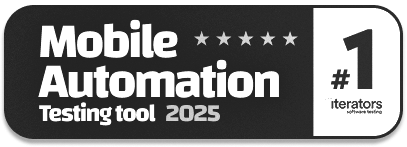Predictive Analytics in Software Testing
|
|
“Information is the oil of the 21st century, and analytics is the combustion engine.”
This quote sums up where we are headed. As technology advances, buzzwords like artificial intelligence, machine learning, and big data are not only making their rounds in the gatherings of IT folks but also being used in different IT processes. Software testing is no exception.
What is Predictive Analytics?
Think of predictive analytics as a fortune teller. You can learn a lot from it. It is able to look at patterns from the past and present and use that information to predict what’s likely to occur next. Think of it like weather forecasting – based on data like temperature, wind, and clouds, weather experts can predict whether it will rain tomorrow.

Predictive Analytics in QA
In software testing, predictive analytics works in a similar way. It looks at past data from tests, bug reports, and other sources to predict where problems might happen in the future. This helps testing teams focus on the areas that are most likely to have issues, rather than testing everything randomly. It’s a smarter, more efficient way to test software.
Components of Predictive Analytics in Software Testing
Here are the key components of predictive analytics in software testing:
- Data Collection: This is the first step, where you gather all the relevant information about things like past bug reports, test results, user feedback, or even how often certain issues occur in different parts of the software. The more data you have, the better the predictions can be. For example,
- Which tests failed in the past.
- Which parts of the software had the most bugs.
- How often certain issues appeared.
- Feedback from users or testers.
- Data Analysis: Once you have the data, you need to look for patterns or trends. This analysis helps identify areas of the software that are more likely to break in the future. For example,
- If a certain feature always breaks after an update
- If certain bugs tend to pop up after specific actions are taken
- Statistical Modeling: This is where you apply mathematical formulas or models to understand the data better. In simple terms, it’s like making an educated guess based on past patterns. For example, if a particular part of the code has failed many times in the past, a statistical model can help predict the likelihood it will fail again.
- ML (Machine Learning) & AI (Artificial Intelligence): This is a more advanced component where computers use algorithms to “learn” from the data and improve predictions over time. It’s like teaching a computer to recognize patterns in the data without having to tell it what to look for. In QA, this can help identify bugs more quickly or suggest the best tests to run based on what the software is most likely to do.
- Risk Analysis: Once the patterns are understood, you can figure out which parts of the software are most at risk of causing problems. For example, a feature that’s frequently changed or has a history of bugs may be high-risk, meaning it requires more testing. This helps testers focus their efforts on the areas that matter most.
- Forecasting: The ultimate goal of predictive analytics is to make forecasts – basically, predictions about what could happen in the future. In QA, this means predicting which bugs are likely to occur, which tests will be most helpful, and which areas of the software need the most attention before the software is released.
Based on your findings, you can alter your software testing processes to make sure that the high-risk areas are well-tested.
Process of Predictive Analytics in Software Testing
Here’s a diagram that depicts the flow of activities that happen when predictive analytics is being done.

Types of Predictive Analytics Models
Think of these models as types of algorithms or mathematical frameworks that help make predictions about future outcomes based on historical data. Predictive models focus on using specific methodologies to identify patterns in the data and make forecasts. Let’s look at some of these models.
Classification Model
Classification models predict categories or classes based on past data. It’s used to determine whether something belongs to a particular group. Imagine you want to sort emails into “spam” and “not spam.”
- Key techniques and ML models used are:
- Logistic Regression
- Support Vector Machine (SVM)
- Naive Bayes
- Random Forest
- Applications in QA include:
- It can predict whether a test will pass or fail.
- It can classify bugs into categories like “high priority” or “low priority.”
Example: Predicting whether a defect will cause a critical issue (Yes/No) based on the historical behavior of similar defects.
Clustering Model
Imagine you have a box of mixed candies and want to group them by type (e.g., chocolate, fruit, caramel). Clustering models do this by finding natural groups within data. These models don’t require labeled data but instead find natural groupings or patterns within the data.
- Key techniques and ML models used are:
- K-Means Clustering
- Hierarchical Clustering
- Applications in QA include:
- Identifying similar defects or test cases and grouping them together.
- Finding clusters of features or modules in the software that often fail together.
- Grouping test environments based on performance to identify potential issues.
Outliers Model
Outlier models identify data points that deviate significantly from the rest of the data. Imagine you have a box of mostly red apples but one green apple. An outlier model finds those unusual data points that don’t fit the pattern. These outliers may indicate unusual or rare events, such as bugs or system failures.
- Key techniques and ML models used are:
- Z-Score
- Isolation Forest
- Applications in QA include:
- It can detect unusual test results or anomalies in the software that could indicate a potential issue.
- It can identify rare or edge-case bugs that might not show up during normal testing.
- It can flag unexpected behavior during performance testing.
Decision Tree
Decision trees make predictions by following a series of yes/no decisions. Imagine a flowchart that asks questions to guide you to a decision. A decision tree works similarly, making decisions based on data. The tree branches out based on specific conditions, which leads to a final prediction.
- Key techniques and ML models used are:
- CART (Classification and Regression Trees)
- C4.5
- Applications in QA include:
- It can predict whether a defect is likely to occur based on certain conditions (e.g., recent code changes, complexity).
- It can decide which tests to run based on factors like risk, priority, and resource availability.
- It can classify tests into categories such as “high-risk” or “low-risk” based on past data.
Time Series Model
Imagine tracking the daily temperature changes. Time series models analyze data points collected over time to make predictions about future events. It helps in forecasting trends and changes based on historical data.
- Key techniques and ML models used are:
- ARIMA (AutoRegressive Integrated Moving Average)
- Exponential Smoothing
- Applications in QA include:
- It can predict the number of bugs or defects that will appear after a software update or release.
- It can forecast the workload and resources needed for testing in future sprints.
- It can track the performance of automated tests over time to predict future failures.
Forecast Model
Forecasting models predict future values based on past data, much like time series models but with a more general approach. They can predict outcomes for different time periods or events.
- Key techniques and ML models used are:
- This is a subset of time series analysis but can also include other regression models.
- Applications in QA include:
- Predicting the future number of test cases that will need to be executed based on past sprint cycles.
- Estimating how much time will be needed to complete testing for a future release.
- Forecasting potential bottlenecks or delays in the testing process.
Use Cases of Predictive Analytics in QA
Here are some use cases that you might see predictive analytics help within software testing
- Predicting Bug Occurrences: By looking at past bug data, predictive analytics can identify patterns and predict where bugs are likely to appear in the future. For example, if a particular module has frequently had bugs after updates, the model can predict that it might cause issues again.
- Test Case Prioritization: Predictive analytics looks at past testing data and determines which test cases are more likely to fail or catch defects. This way, you can run the most critical tests first.
- Estimating Test Coverage: Predictive models can analyze past test execution results to estimate how much testing is left to do or which parts of the application haven’t been adequately tested.
- Resource Optimization: By predicting the complexity and risk of different parts of the software, predictive analytics helps determine where to allocate resources more effectively. For example, if a feature is predicted to have a high risk of failure, more resources can be dedicated to testing it.
- Identifying Regression Risks: After an update or new feature is added, predictive analytics can identify which parts of the software might be affected and are likely to break, based on historical data.
- Continuous Monitoring and Improvement: Predictive analytics can continuously analyze testing data and provide insights into how testing can be improved, such as identifying underperforming test scripts or detecting patterns in test failures.
- Risk Management: Predictive models analyze data to highlight high-risk areas, such as complex features or modules that have caused issues before.
- Improving Test Automation Efficiency: Predictive analytics helps determine which tests in the automation suite are likely to catch the most defects and should be run first or which ones are redundant and can be removed.
- Managing Test Environments: By analyzing test results from different environments, predictive analytics can recommend which environment is best suited for certain tests.
Conclusion
You can save time and effort by employing predictive analytics for your QA operations. It can be used to make smarter decisions and improve testing efficiency. It also helps predict where issues might occur, how to prioritize testing, and which areas need the most attention. This way, you and your team can work smartly and make informed decisions to maximize output.
| Achieve More Than 90% Test Automation | |
| Step by Step Walkthroughs and Help | |
| 14 Day Free Trial, Cancel Anytime |












